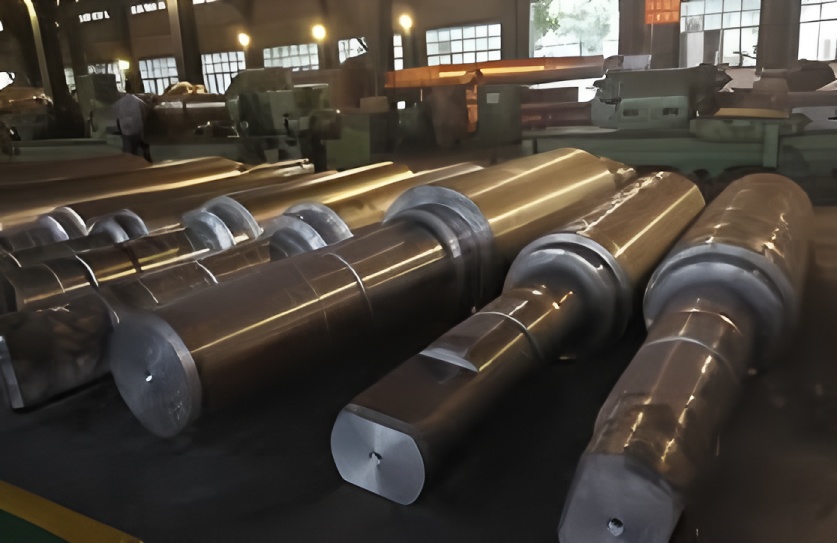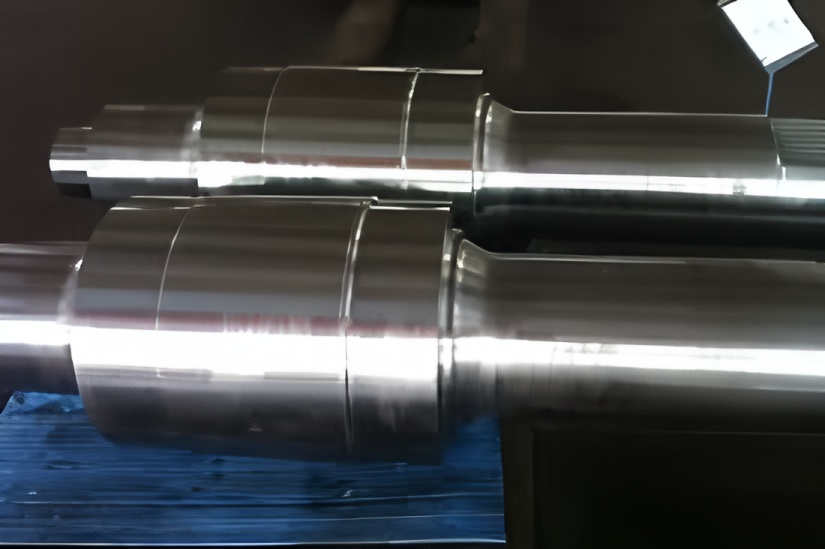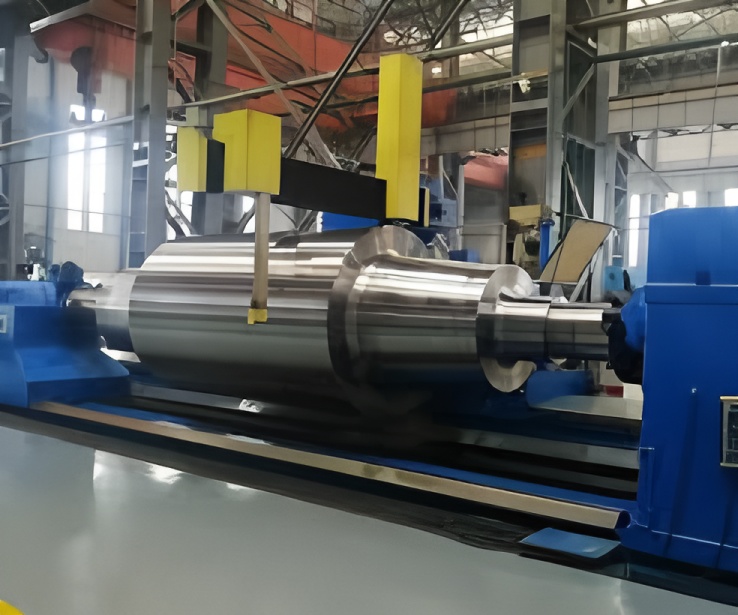The surface of cold work rolls must be defect-free and meet specified smoothness requirements. These rolls feature a hard surface with a tough core, ensuring long service life. Backup roll hardness should be lower than that of work rolls to avoid damaging their surfaces during operation. Typically, backup rolls are replaced and reground every six months. Due to high contact stress and frequent alternating loads during rolling, backup rolls are subject to fatigue. Surface spalling may occur; minor spalling can often be cleaned, and the roll may continue to be used.
Keyword: work rolls
Work Roll Selection
Surface Condition
Cold work rolls should have flawless surfaces with required smoothness. They are characterized by high surface hardness and a tough, ductile core, providing extended service life. Work rolls are generally made of forged alloy steel, with a body hardness of at least 95–100 Shore and neck hardness of 45–50 Shore.
Backup rolls should have lower hardness than work rolls to prevent surface damage during grinding. Typically, backup roll hardness ranges between Shore 60–65°, with the neck at Shore 42°. These rolls are usually replaced and reground every six months. Under high contact stress and cyclic loading, fatigue-induced spalling may occur. If spalling is minor, cleaning may allow continued use; some mills require immediate replacement and grinding regardless of spalling extent. To minimize spalling, backup rolls should undergo stress relief annealing after approximately six months of use.
Roll Type and Grinding
During cold rolling, rolls deform under pressure and thermal expansion, resulting in deflection (load-induced crown) and non-uniform thermal expansion (thermal crown). To compensate, rolls are pre-ground with a specific curve, known as the roll crown. Cold rolling primarily involves controlling the load-induced crown, usually through a positive crown (convex). Crown size depends on reduction rate, strip yield strength and width, roll heating conditions, material properties, rolling tension, lubricant performance, and other factors.
Rolls must be ground on specialized grinders to remove defects such as dents, scratches, or adhered material, achieving the required crown and surface finish. The crown should be centered symmetrically along the roll length, with a smooth transition toward both ends.
Roll Configuration
Roll configuration refers to the distribution of the required crown among the rolls—whether applied to both top and bottom work rolls or only one. Configuration should consider grinding convenience and ease of adjustment while ensuring product quality. Common approaches include:
For two-high mills: crowns are generally applied to both upper and lower work rolls; a few configurations apply crown only to the upper roll, with the lower roll remaining cylindrical.
For four-high mills: work rolls usually have crowns, while backup rolls are cylindrical. For small crowns, only the upper work roll may be crowned; for larger crowns, the total crown is distributed evenly between upper and lower work rolls.

Work Roll Shape Control
During strip rolling, variations in rolling pressure and thermal deformation cause roll shape changes, leading to uneven strip thickness or wave formation. Waves may appear at the center or edges, indicating uneven pressure distribution. Excessive waving can result in scrap or strip breaks. Effective shape control is essential for stable rolling and product quality.
Conventional Shape Control
At lower speeds, wave formation can be mitigated by adjusting parameters such as spray cooling, roll bending, tension, reduction rate, and speed, depending on wave size and position.Hydraulic Roll Bending for Shape Control
Hydraulic systems installed on backup or work roll bearings allow active roll bending for rapid shape adjustment. This method significantly improves flatness, especially during high-speed rolling.
Edge waves: Increase positive bending force (P) or reduce negative bending force (Q) to enhance roll crown (positive bending).
Center waves: Increase negative bending force (Q) or reduce positive bending force (P) to reduce crown (negative bending).
Automatic Shape Control
Modern cold rolling mills are equipped with shape meters integrated with hydraulic bending, roll tilt, rolling force, cooling, and tension systems through computer control, enabling closed-loop automatic shape regulation.
Tension Control
Modern strip rolling mills employ robust entry and exit tension systems. Front tension can exceed the strip’s yield strength slightly, minimizing wave formation from uneven elongation and improving flatness.
Increased tension reduces rolling force; back tension has a more significant effect than front tension. However, excessive back tension may cause overslip, reducing forward slip and destabilizing rolling. Back tension should therefore be limited.
Tension improves strip centering during rolling, reduces deviation, and supports high-speed operation. However, improper tension adjustment may cause strip breaks or layer misalignment in coils, leading to surface scratches.
The maximum applied tension during cold rolling should not exceed the strip’s yield strength. For aluminum alloy strips, unit tension is typically set at 50–60% of the pass-specific yield strength, considering material plasticity and edge condition.
Tension adjustment ranges generally vary between 10:1 and 20:1, allowing precise control within this range. Tension must remain stable during rolling; fluctuations as small as ±1–3% can cause layer misalignment or scratches, while larger variations may result in breakage.
As rolling passes increase, work hardening raises the strip’s yield strength. Therefore, unit tension should be gradually increased with each pass. Uncoiling tension should be lower than the previous coiling tension to prevent interlayer slippage and surface damage.



